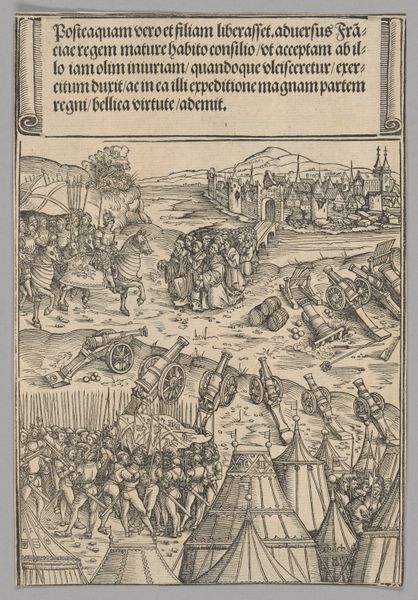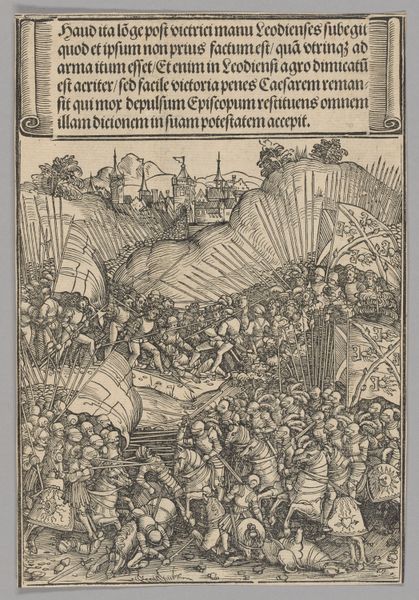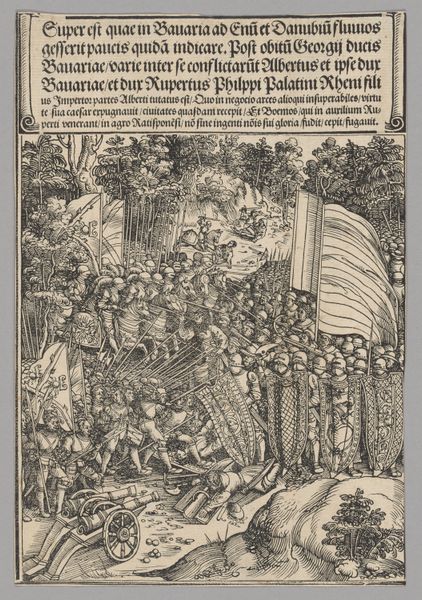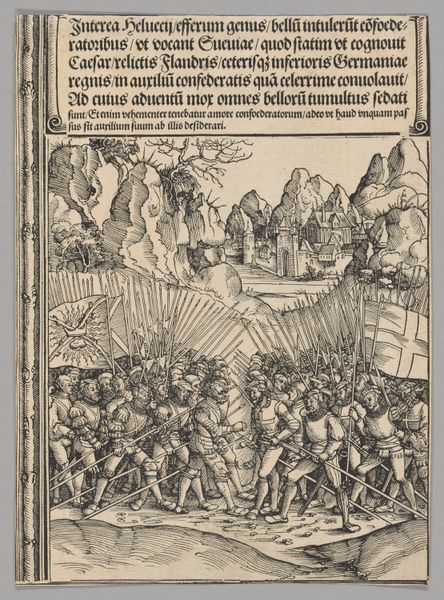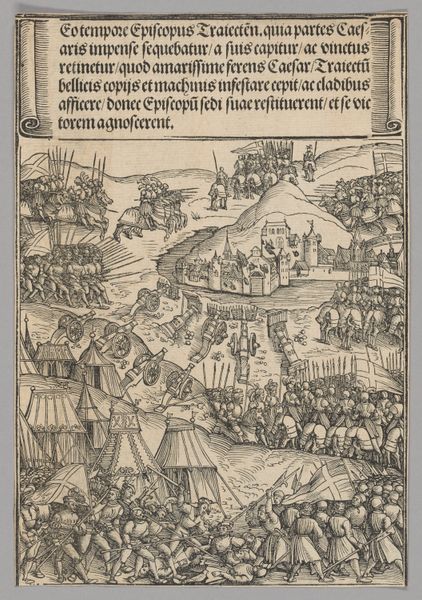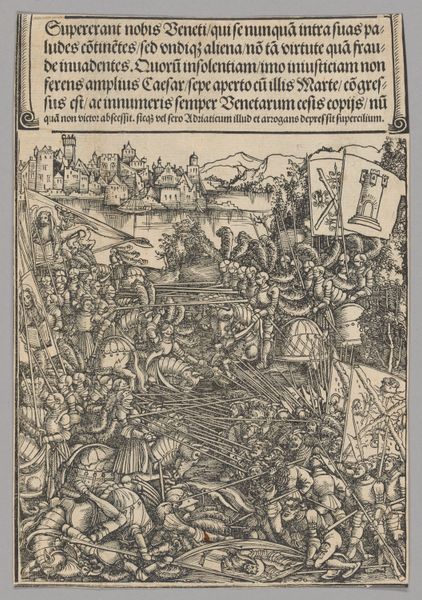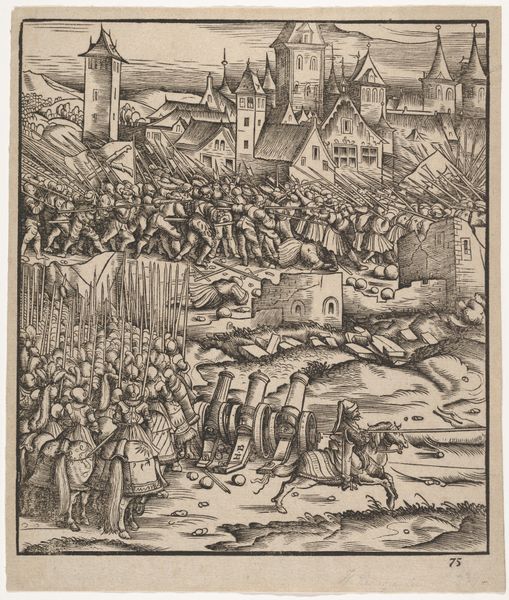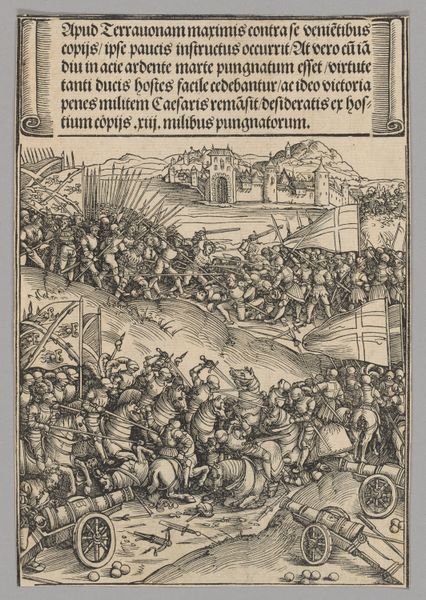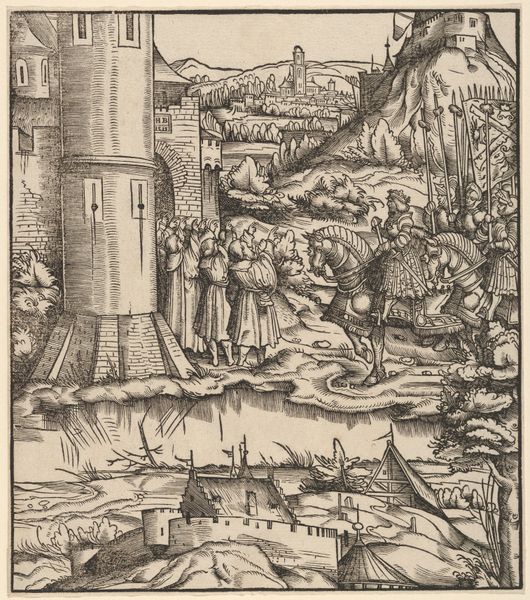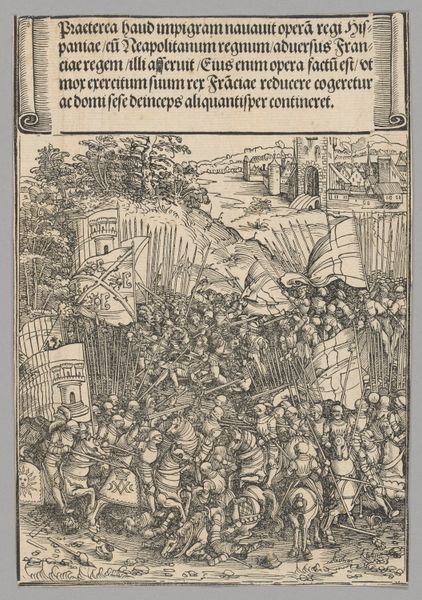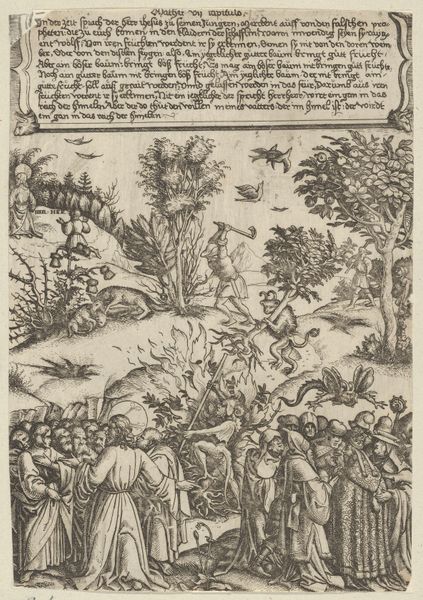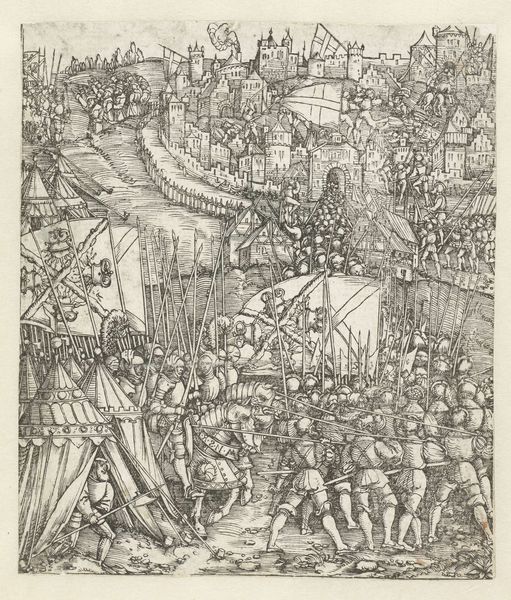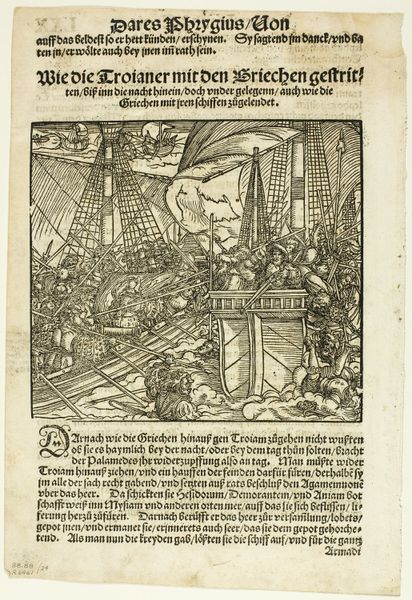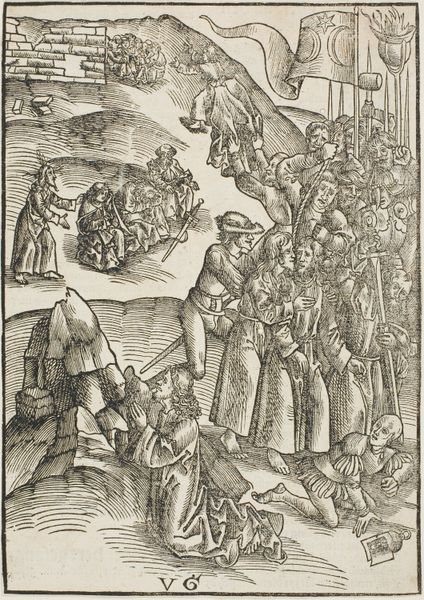
Flemish Rebellion, plate 7 from Historical Scenes from the Life of Emperor Maximilian I from the Triumphal Arch c. 1515 - 1520
0:00
0:00
drawing, print, paper, ink, woodcut
#
drawing
# print
#
paper
#
11_renaissance
#
ink
#
woodcut
#
history-painting
Dimensions: 222 × 151 mm
Copyright: Public Domain
Curator: Here we have a woodcut from around 1515 to 1520, attributed to Wolf Traut. It's part of a series titled "Historical Scenes from the Life of Emperor Maximilian I from the Triumphal Arch," and this particular plate depicts the "Flemish Rebellion." Editor: My immediate reaction is that it's incredibly detailed, almost chaotic. The density of figures and the stark black and white create a sense of upheaval and conflict, wouldn't you agree? Curator: Absolutely. Remember, these prints served a vital public function, spreading Imperial propaganda in ways everyone could see. What Traut represents here is not necessarily an objective account of events, but Maximilian's view on subduing rebellious territories. Notice the Latin text at the top, essentially outlining the Emperor’s narrative of the situation. Editor: Yes, text as image! That gives me pause. It's an assertion of authority, framing how viewers should interpret the visual information. Symbolically, consider the city in the background. A fortified Flemish city being approached by armies of spears! Is the city an icon of Flemish autonomy about to be squelched? Curator: Indeed. The sheer number of soldiers contrasted with the group of figures kneeling before the city gate. One must be Maximilian receiving their fealty. Think of the politics inherent in this kind of presentation. This wasn’t necessarily reportage as we understand it; the image actively reinforces the Emperor’s power and legitimacy. Editor: But even within that carefully constructed narrative, there’s the persistent, ambiguous power of images themselves. The sheer busyness could also express some underlying ambivalence – perhaps unease regarding quelling dissent through force? The eye has no rest, so there’s a discomfort, perhaps? Curator: That's a provocative reading. Whether intended or not, that potential ambiguity reveals the limitations inherent in employing visual media as straightforward propaganda. The message is clear, but as you highlight, those subconscious stirrings could make people think. Editor: Well, I think we've only just scratched the surface in decoding its symbolic potential. These images live on, prompting questions about power, resistance, and visual messaging. Curator: Precisely. Understanding the context is crucial, it is more than art, it’s political history etched into wood and ink, presented for a vast public!
Comments
No comments
Be the first to comment and join the conversation on the ultimate creative platform.
